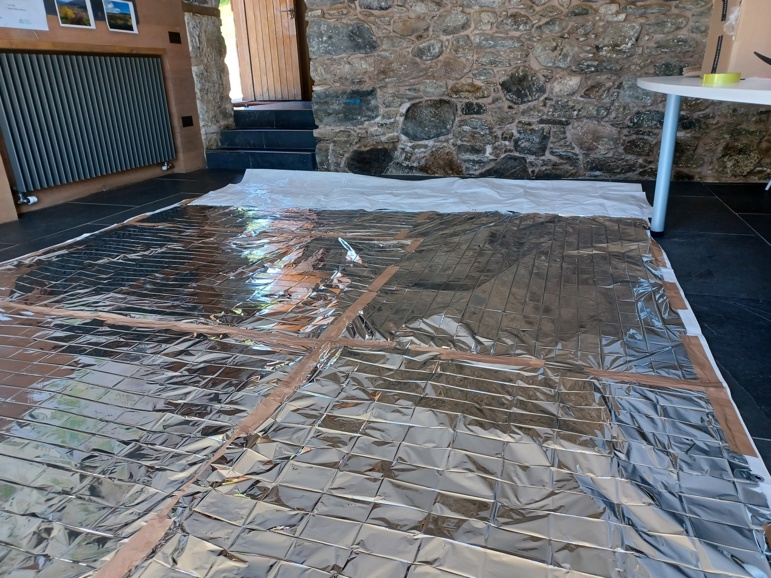Frozen trees to help extend planting season
We’re currently trialling planting frozen tree across Highland Perthshire and the Angus Glens to try and extend our planting season and improve the hardiness of our saplings.
“Freezing the trees puts them into dormancy. Being frozen, trees can be preserved for around 6 months compared to our current method of cold storage which is usually around 3 months. The cells of a frozen tree have enough locked-in nutrient reserves to survive once planted, even in warmer weather,” says Stewardship Forester Paige Klinkman.
This allows them to be planted after the recognised winter planting season of October to March.
For this, young trees are being frozen and stored at our newly renovated nursery in Newton before being transported to planting sites. Here they are left to thaw under controlled conditions before being planted.

“Planting trees when they are dormant, typically in the colder months, allows trees to focus energy on developing root systems rather than producing leaves and shoots. The frozen plants also don’t have the same issues with mould or plant shock which is when the roots are damaged during transportation and distribution across sites. Other benefits were that the young trees had less damage caused by deer browsing with a wider variety of grazing options available to deer in the warmer conditions,” says Paige.
The frozen trees are planted in the same way as any other bare root or cell grown tree, with the thawing out process the only additional step. A slow thaw is needed, and temperatures are kept low (around 5 degrees Celsius) using silvicultural tarps.
“This method means we have fresh trees later in the season which is hard to get if not frozen. Saplings planted in summer tend to establish themselves quicker and are often hardier as the warmer temperatures encourages them to grow,” says Paige.

As climate change throws new challenges at forests including rising temperatures, prolonged drought, increased pests, along with the need to grow more timber and faster, innovation is key to helping ensure security of future timber supply for Scotland’s thriving £1-billion forestry industry and sustain forestry’s contribution to the wider economy.
Trialling methods such as frozen seedling stock is part of our endeavour to plant more trees, so that forests and woodlands contribute significantly to tackling the climate emergency and continue to support jobs, businesses, and livelihoods in Scotland’s rural communities.